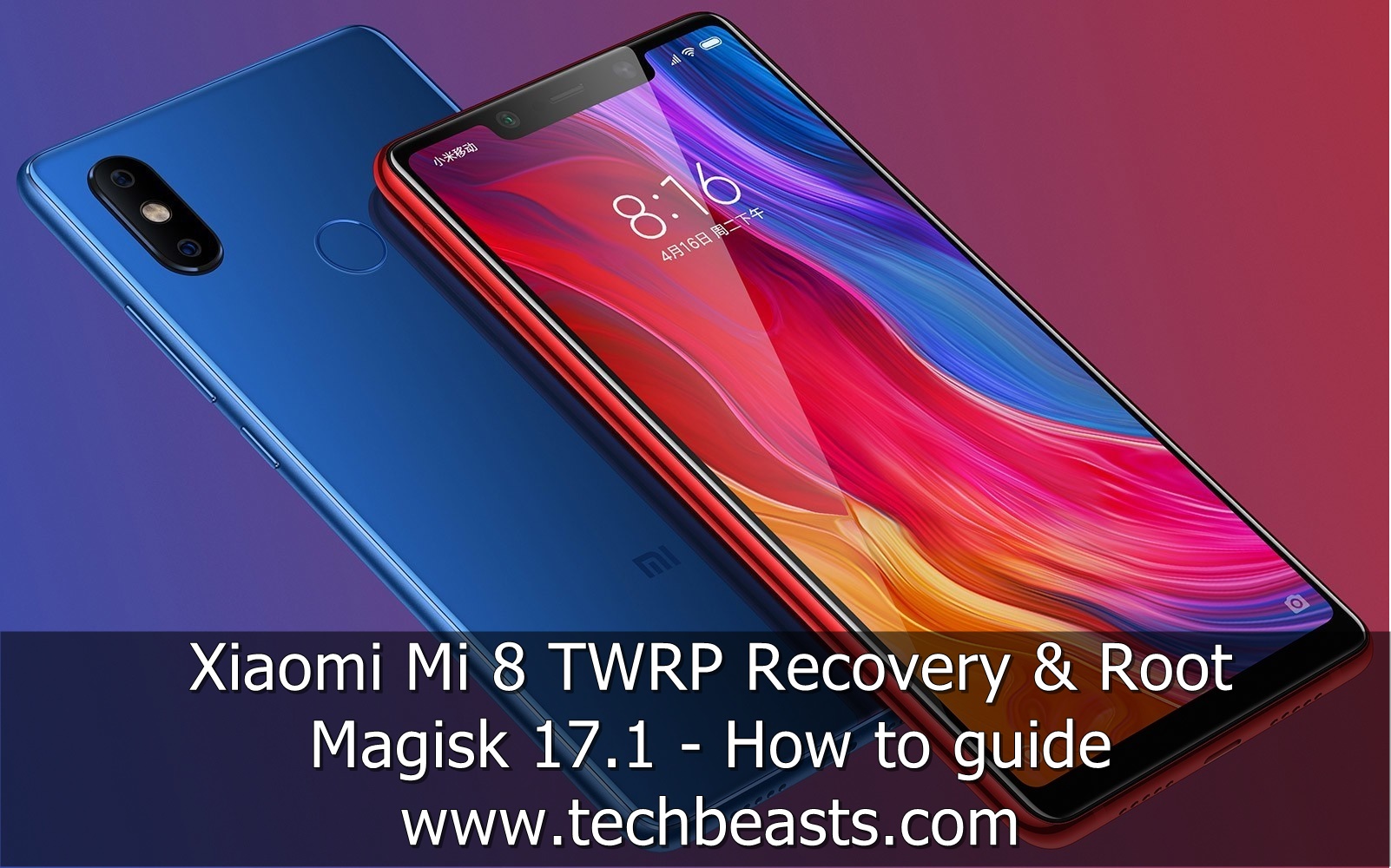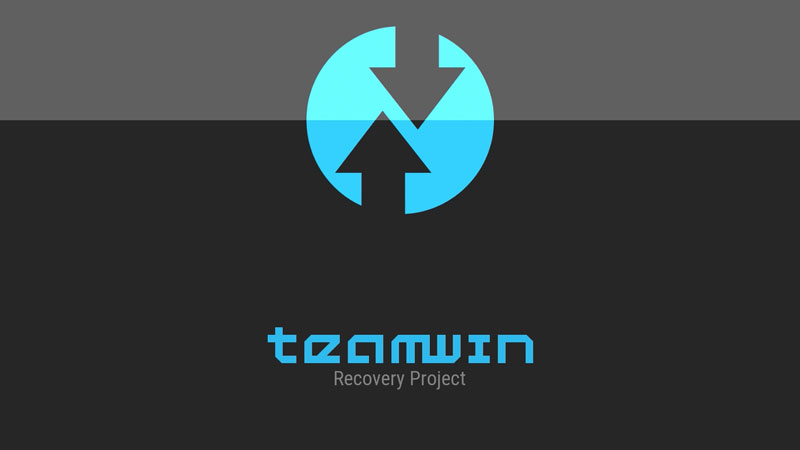An unofficial build of the TWRP custom recovery is now available for the Xiaomi Mi 8. The TWRP recovery can be installed on the Xiaomi Mi 8 running on the latest version of MIUI. The available TWRP recovery does not have any known bugs so far. It can be used to flash any custom ROM, Gapps or even root the Xiaomi Mi 8. In this guide, you will learn how to install TWRP Recovery and Root Xiaomi Mi 8. Before moving towards the recovery installation and root procedure, let us take a look at the Xiaomi Mi 8 spec-sheet.
Contents
Xiaomi Mi 8
The Apple of China (Xiaomi) launched the Mi 8 in May 2018. Xiaomi Mi 8 is the company’s flagship device for this year. The Mi 8 comes in 4 variants including the Xiaomi Mi 8, Mi 8 SE, Mi 8 EE, and the Mi 8X or Mi 8 Youth. The one we are talking about here is the flagship Mi 8 with the top-notch specifications.
The Xiaomi Mi 8 sports a 6.21-inch Super AMOLED display. This display has a resolution of 1080 x 2248 pixels and 402 PPI. The Mi 8 has a big notch on the front. It has a 19:9 display ratio. The Mi 8 is powered by Qualcomm Snapdragon 845 CPU accompanied by Adreno 630 GPU.
Mi 8 can be found in various RAM/Storage configurations. The phone comes with 64/128/256 GB storage with 6 or 8 GB of RAM. It has a dual shooter at the back. This dual shooter system has both the sensors of 12MP each. On the front, it has a 20MP camera. The Mi 8 has a 3,400 mAh battery inside. The phone runs on Android Oreo out of the box. Xiaomi Mi 8 is available in Black, Blue, White and Gold colors.
TWRP Recovery for Mi 8
The TWRP Recovery on the Mi 8 can be used for a number of purposes. First of all, the TWRP recovery can be used to back up each and every single partition of your phone. The TWRP recovery comes with the terminal which can be used to enter commands inside the TWRP to perform various tasks.
There is a wipe option in TWRP that will let the Mi 8 users wipe the selective partitions of their phone. Formatting the data via TWRP recovery does not wipe your internal storage. It means you can always factory reset your phone without worrying about your images and other such data.
The install option in TWRP allows Mi 8 owners to flash ROMs, MODs, Gapps, files like Magisk and SuperSU. This option supports both the ZIP and IMG formats.
The MTP option in TWRP can be used to copy data from your computer to the phone while it is connected in the TWRP recovery mode.
Overall, the TWRP Recovery is worth installing on a phone unless you’re worried about losing the warranty. TWRP Recovery’s installation procedure is custom. It requires unlocking your phone’s bootloader and that’s why you void the phone’s warranty.
Magisk for Xiaomi Mi 8
Mi 8 can be rooted using the latest version of Magisk i.e. Magisk 17.1. Some users have reported the Magisk to be working absolutely fine on their phones. Magisk has been found working with custom ROMs on the Mi 8 as well. So if you are looking forward to rooting your Mi 8, you can definitely use the Magisk 17.1 to root the phone.
Rooting the phone will let you customize the phone’s UI, enhance its battery life and even boost up the phone’s performance. To learn more about root, you can go through the reasons to root the Android phone in 2018. Also, take a look at the best root Apps for rooted Android phones.
Install TWRP Recovery and Root Xiaomi Mi 8
Preparations to flash TWRP on Xiaomi Mi 8 and root it
- This guide is only for Xiaomi Mi 8. Do not try on any other phone.
- Charge your phone up to 50% to avoid power loss during the installation process.
- Backup contacts, call logs, text messages and media content. This procedure will wipe your phone completely.
- Use OEM Data Cable to connect the phone to the computer.
- Enable OEM Unlocking and USB Debugging on the Xiaomi Mi 8.
- Unlock the Bootloader of your Xiaomi Mi 8.
- Follow the remaining steps carefully.
Downloads
- ADB and Fastboot Drivers
- As a result of installing these drivers, you will get the following folder: C:\Program Files (x86)\Minimal ADB and Fastboot
- Xiaomi Mi Android USB Drivers
- TWRP Recovery for Mi 8 – Download
- Rename the downloaded file to “twrp.img” only. Copy the twrp.img file to C:\Program Files (x86)\Minimal ADB and Fastboot
- Magisk.zip file
- Disable_Dm-Verity_FEC_v1.1.zip
Installing TWRP on Mi 8
- Open the Minimal ADB and Fastboot.exe file from your computer’s desktop. If you don’t have this file, open the folder mentioned above and then open the file cmd-here.exe.
- Connect the Xiaomi Mi 8 to your computer now.
- In the command window, enter the following commands one by one.
- adb reboot bootloader
- The phone will ask you for USB Debugging permission, all the phone. It will reboot now into the Fastboot mode.
- fastboot devices
- This command will verify connection in the fastboot mode.
- fastboot flash recovery twrp.img
- This command will flash the twrp recovery on your phone.
- fastboot boot
- This command will reboot your phone in order to let you access the TWRP recovery.
- adb reboot bootloader
- Now do not reboot into the system, follow the remaining steps carefully.
- If the TWRP recovery asks for any password, press cancel to enter the TWRP.
- Enter the TWRP recovery now.
- Click on “Wipe > Format Data”.
- After formatting data, click on Reboot > Recovery.
- Your phone will now reboot into the recovery mode again.
- Head over to the steps given below now.
Root Mi 8
- At this point, your phone should be in the TWRP mode.
- Click on the MTP mode in TWRP and mount all the partitions.
- Connect your phone to the computer now.
- Copy the Magisk 17.1.zip and the Disable_DM Verity files to the phone.
- In TWRP, click on Install > Install Zip > Locate and select Disable_DM Verity > swipe to flash.
- Similarly, click on Install once again, Install Zip > Locate and select Magisk.zip file this time.
- After flashing both the files, reboot your phone into the system now.
- Congrats! Your Xiaomi Mi 8 is rooted now with the TWRP recovery installed.
Conclusion
That’s all with the recovery installation and root procedure. If you are stuck with something, feel free to reach out to me via the comments box given below.














